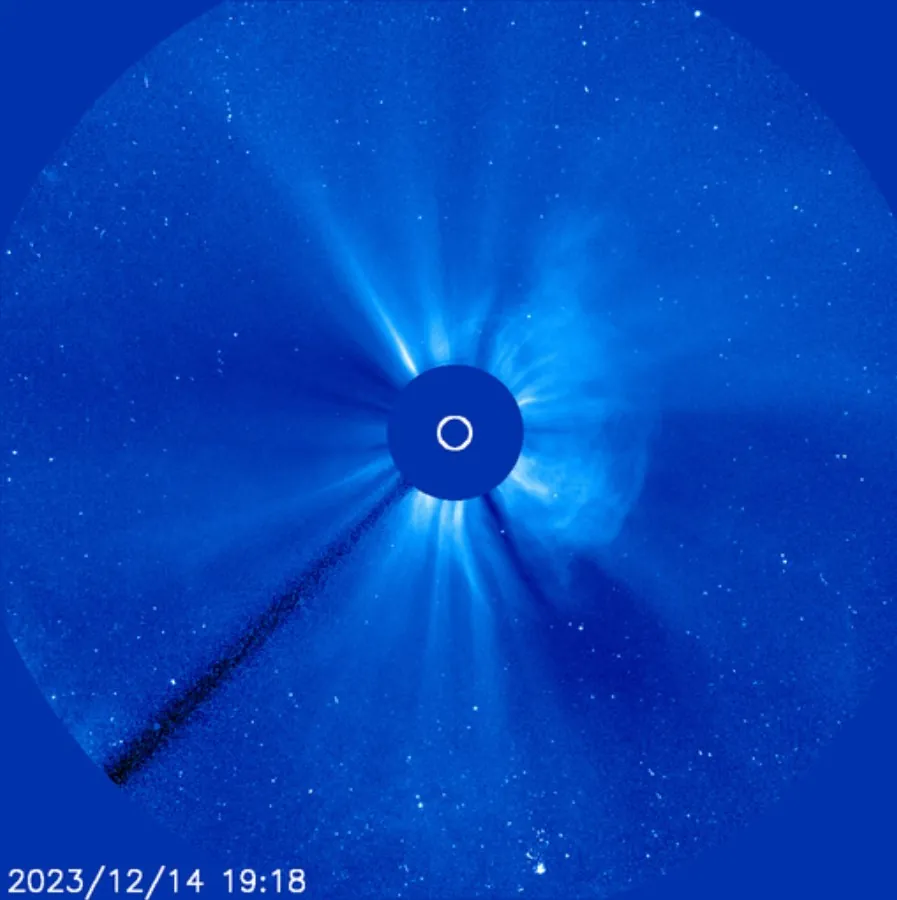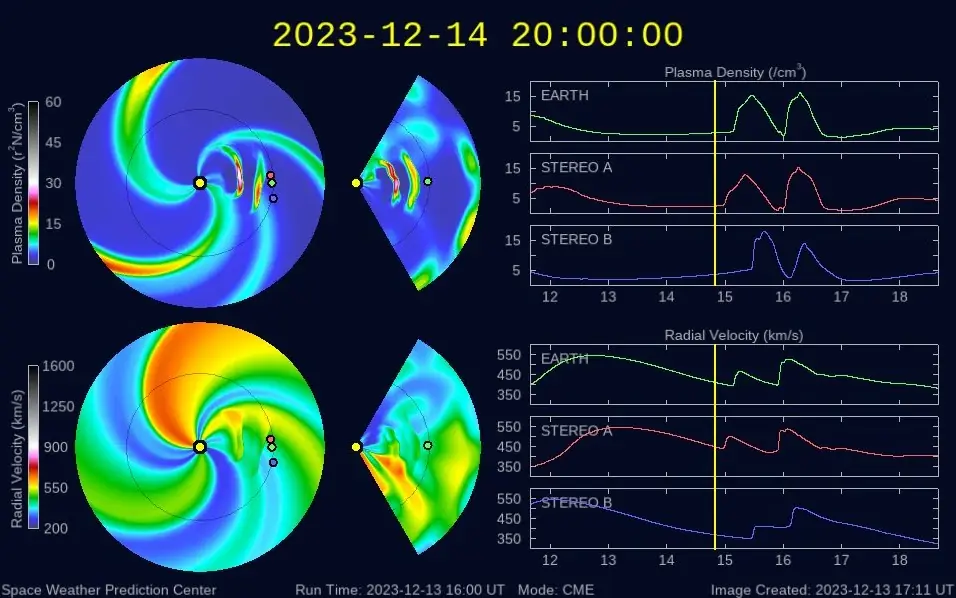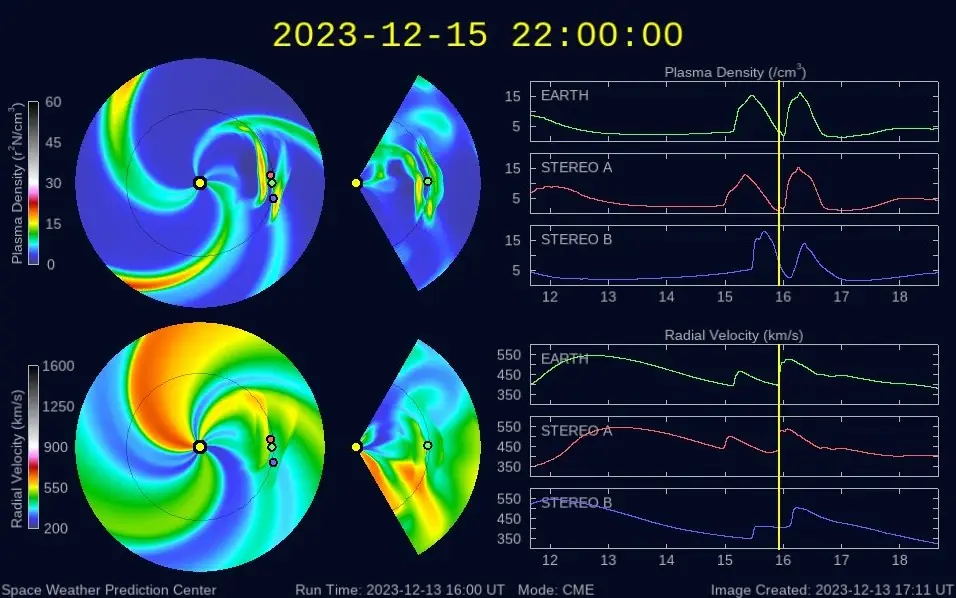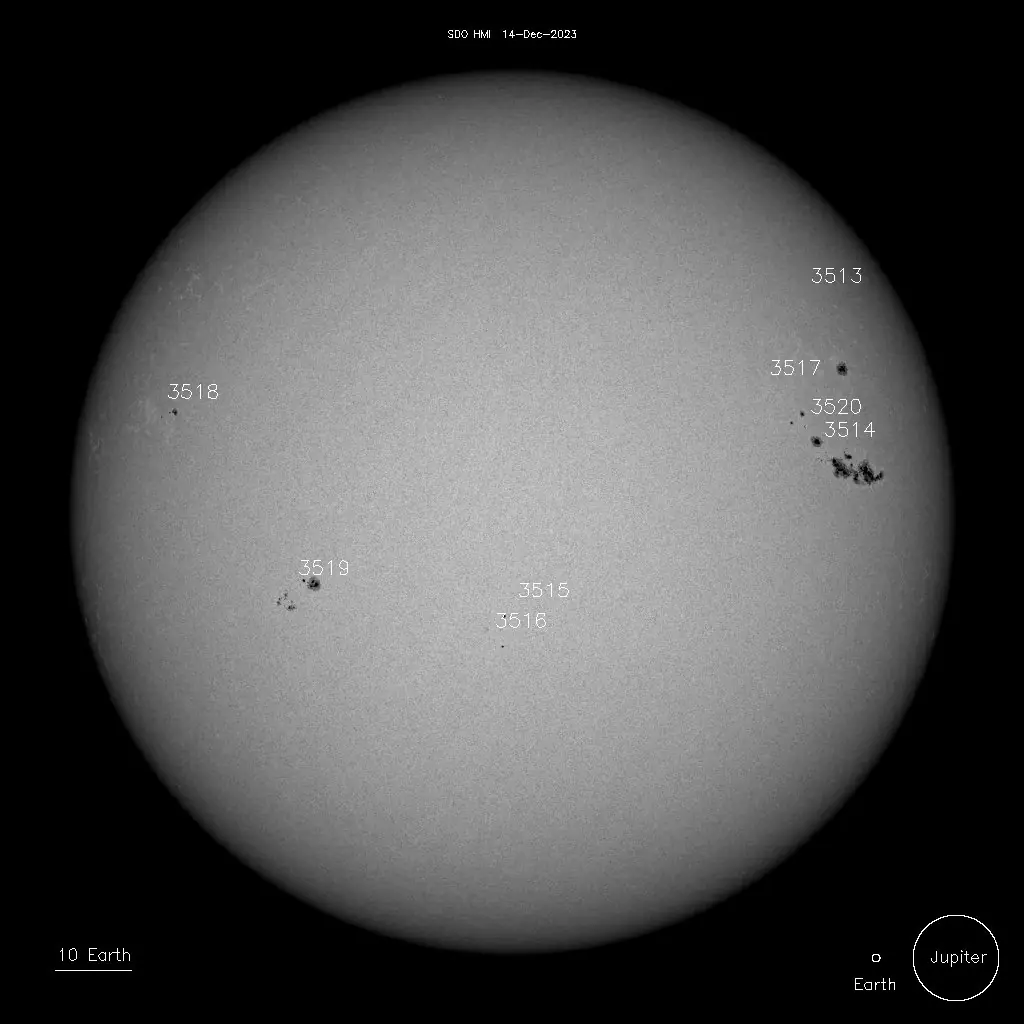A major solar event occurred on December 14, 2023, when a powerful solar flare measuring X2.8 erupted from Active Region 3514. This event, which started at 16:47 and ended at 17:12 UTC, is the strongest solar flare since September 10, 2017, and the strongest solar flare of the current Solar Cycle.
Associated with the event was a Type IV and Type II radio sweep (estimated velocity 2 118 km/s) as well as a Tenflare (4 800 sfu) and a Castelli U radio signature. Particularly high radio burst values were noted on the 245hz, 410hz, and 610Hz frequencies.
A subsequent CME was observed in LASCO C2/C3 and STEREO-A COR2 satellite imagery, beginning after 17:38 UTC.
Analysis of this event indicates a likely arrival at Earth by late on December 16 to early on December 17.






Other significant events in 24 hours to 12:30 UTC today, included an M2.3 flare at 13:48 UTC on December 14, an M6.3 flare at 07:15 UTC and an M6.9 flare at 07:34 UTC today, all from Region 3514.
A 1 200 sfu 10cm radio burst was observed at 08:01 UTC, likely associated with the M6.9 flare.
Additionally, an erupting filament channel centered near N25E20 was observed beginning around 11:30 UTC. Analysis of these events for Earth-directed components is ongoing, SWPC said.
Most of the significant spot development was observed in Region 3514. The remaining numbered active regions remained relatively simple.


Over the past 24 hours, the electron flux levels greater than 2 MeV were observed to be within normal to moderate ranges, while the 10 MeV proton flux showed a slight elevation above background levels. Looking ahead, forecasts until December 17 indicate that the greater than 2 MeV electron flux will remain at moderate levels. Moreover, the greater than 10 MeV proton flux is expected to trend above its usual background levels, potentially reaching the S1 – Minor threshold. This increase in proton flux is attributed to the recent activity from Region 3514.
Measuring solar wind parameters over the last 24 hours proved challenging due to issues with ACE tracking and DSCOVR data. Despite these difficulties, the solar wind environment seemed to normalize, with average total magnetic field strength near 5 nT and Bz fluctuating slightly between +1 and -5 nT. Solar wind speeds varied, showing inconsistency between different data sources. A notable change occurred towards the period’s end, with a sudden increase in total field strength and wind speeds, hinting at the possible arrival of a CME from December 11.
Periodic enhancements in solar wind are anticipated through December 17, influenced by weak, positive polarity CH HSS and expected CME arrivals. These enhancements may become more pronounced around midday on December 15 and early on December 16, following CME events from December 11 and 12.
The geomagnetic field forecast for December 15 – 17 predicts a rise to G1 – Minor geomagnetic storm conditions. This increase is attributed to the influences of positive polarity CH HSS and recent CME events that occurred on December 11 and 12. Additionally, there is a possibility of G2 – Moderate geomagnetic storming late on December 16 to early December 17, coinciding with the expected arrival of the CME associated with the X2.8 solar flare that erupted on December 14. The exact magnitude and timing of this event are still under evaluation.
References:
1 Forecast Discussion – Issued: 2023 Dec 15 1230 UTC – Prepared by the U.S. Dept. of Commerce, NOAA, Space Weather Prediction Center
2 Major X2.8 solar flare erupts from Region 3514 – The Watchers – December 14, 2023
Featured image credit: ESA/NASA SOHO/LASCO C3, The Watchers. Acquired at 19:18 UTC on December 14, 2023
If you value what we do here, create your ad-free account and support our journalism.
Multiple CMEs heading toward Earth, G3 – Strong Geomagnetic Storm Watch in effect
Wednesday, November 29, 2023
M9.8 solar flare erupts from geoeffective Region 3500, Earth-directed CME likely
Tuesday, November 28, 2023
Global SAR arc outbreak: Geomagnetic storm leads to rare SAR arc sightings across the globe
Wednesday, November 8, 2023
Geomagnetic storm reaches G3 – Strong level after dual CME impact
Monday, November 6, 2023
Two CMEs strike Earth, producing G3 – Strong geomagnetic storm
Tuesday, September 19, 2023
Double-peaked, long-duration M5.7 solar flare from AR 3363 produced asymmetric halo CME, S2 – Moderate solar radiation storm
Tuesday, July 18, 2023
Long-duration X1.0 solar flare erupts from Region 3354
Monday, July 3, 2023
